Hampton Bay Ceiling Fan Troubleshooting Guide
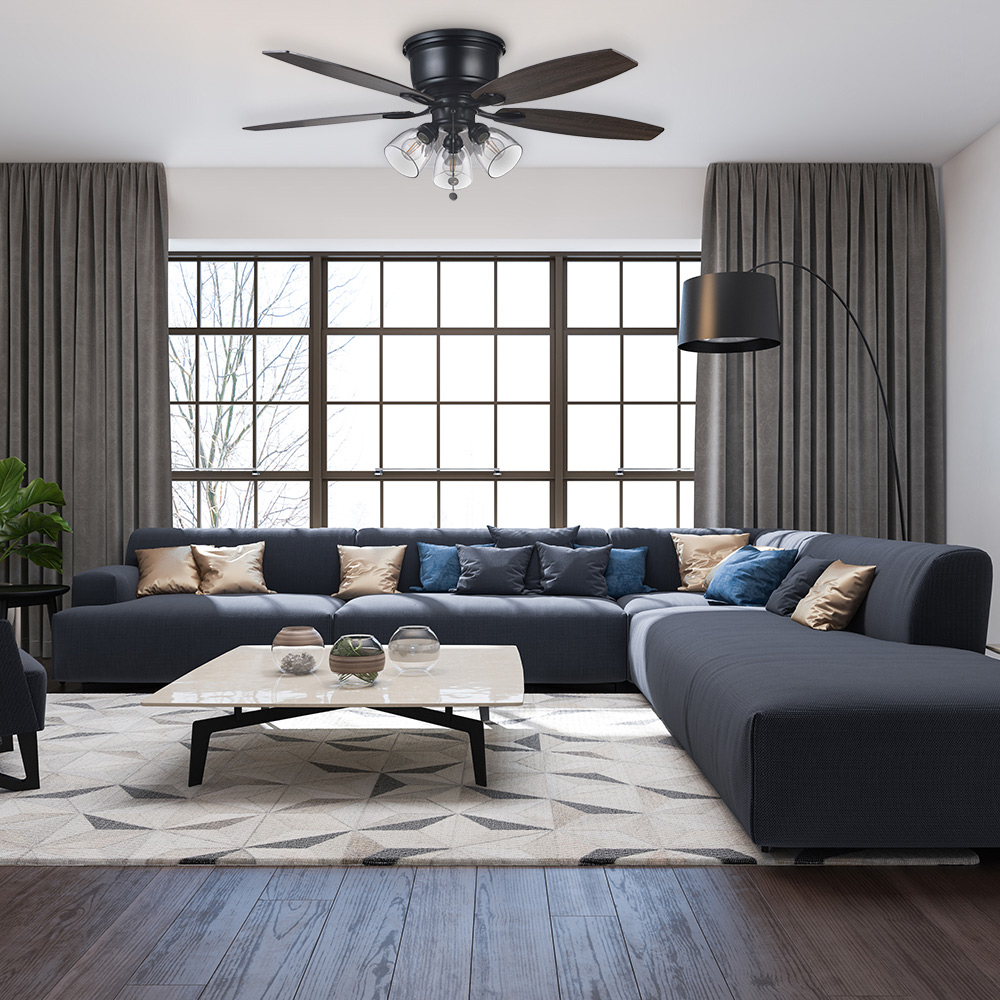
Published September 5, 2023
Hampton Bay ceiling fans are built to give you years of service, but things can go wrong. Is your fan too noisy, not blowing air or just doesn’t work? Our Home Depot Hampton Bay Ceiling Fan Troubleshooting guide gives you 11 classic problems and tells you what to do to fix your fan yourself. You can also check your Hampton Bay ceiling fan manual for more ideas.
Difficulty:
Beginner
Duration:
Under 2 hours
Table of Contents
Why Won't the Fan Start?
Why Is the Fan Noisy?
Why Does the Fan Wobble?
Why Isn't the Remote Working?
Why Doesn't the Light Work?
Why Won't the Fan Blow Air?
Why Won't the Fan Start?
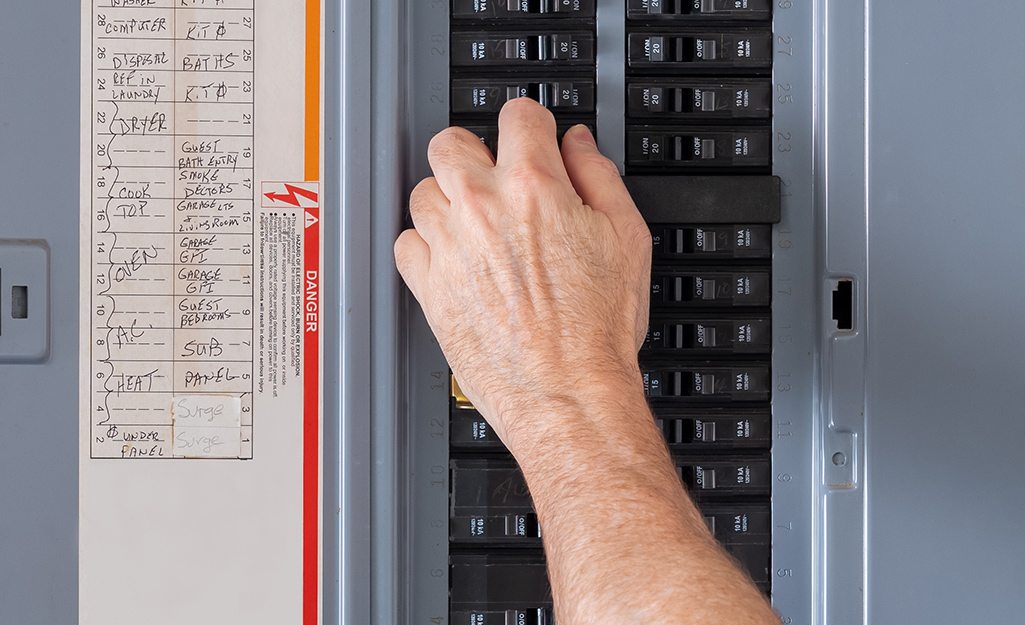
If your ceiling fan has stopped working:
- Check your home's circuit breaker to see if it is working properly.
- Check the wire connections in your Hampton Bay ceiling fan by first turning off the power. Then, open the fan to check if the supply wires from your house and the fan wires are properly connected.
Why Is the Fan Noisy?
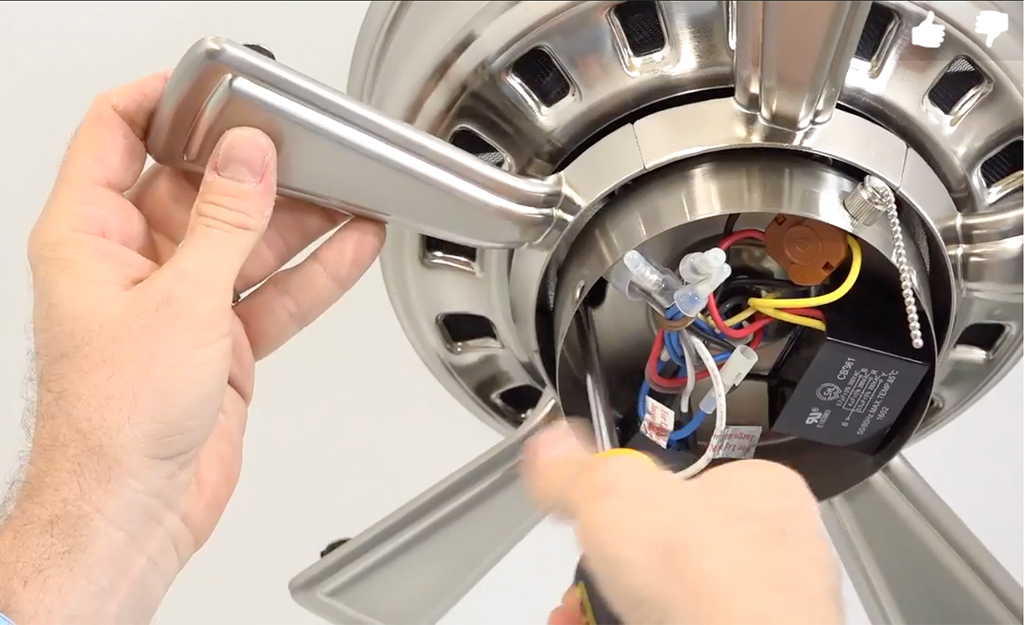
Hampton Bay fans are designed to run quietly, but if your fan is making a lot of noise you should:
- Tighten all motor housing screws.
- Tighten the screws that attach the fan blade bracket to the motor hub.
- Tighten the screws and secure the glassware of the light fixture.
- Screw the light bulbs in securely.
If your ceiling fan is still noisy, turn off the power and then:
- Check the wire nut connections. They may be rattling against each other or against the wall of the switch housing.
- Check the rubber pads between the mounting plate and outlet box.
- Check your ceiling outlet box and make sure it's secure.
- Check the remote. Bypass the receiver and direct wire your fan to the switch. If the noise stops, then the receiver may need to be replaced. If the noise continues, your capacitor may be the issue.
Tip: If your fan is new, give it 24 hours to "break in" before trying to correct any noise issues.
Why Does the Fan Wobble?

First, try these fixes to correct a wobbling ceiling fan. Let the fan run for 10 minutes after each fix to self-adjust.
- Secure the screws in the junction box, on the down rod, on the blades and the blade brackets.
- Make sure the blades are firmly attached to the brackets and the brackets to the motor housing.
- Blades should be within 1/8-inch of each other, so make sure they are level. Do this by measuring the distance between the ceiling and the tip of the blades. Then, measure from the center of each blade to the point on the ceiling.
- Rotate the next blade into position and measure it. Repeat until you’ve measured all the blades.
- If the deviation is greater than 1/8-inch and the fan is still wobbling, try using a balancing kit. Most fans include a balancing kit or you can buy one separately.
Why Isn't the Remote Working?
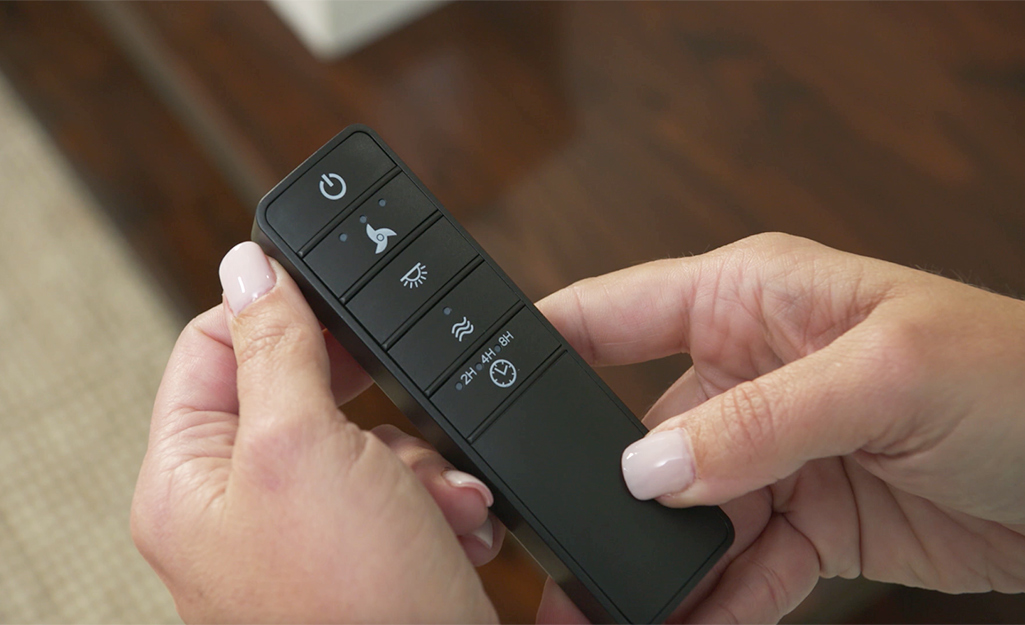
If your Hampton Bay ceiling fan remote is not working, try these troubleshooting steps.
- You may be out of range. Always be within 10 to 20 feet of the fan when using your remote.
- Dead batteries are usually the reason. Try replacing them.
- Make sure both the receiver and the remote are set at the same frequency. Turn off your power supply. Set the code on the remote by sliding the code switches either up or down. Slide the code switches on the receiver to the same position.
- If none of the above solves your problem, you may need a replacement remote control and/or receiver.
Tip: If you’re trying to use a universal remote, you should know that fans with DC motors only work with remote controls specifically designed for DC motors. Refer to your owner’s manual on how to pair your DC fan with its DC remote. If your remote still doesn’t control your fan, contact customer service.
Why Doesn't the Light Work?

If your Hampton Bay ceiling fan light is not working:
- Try checking the bulbs to make sure they are screwed in correctly.
- Replace any non-working bulbs.
- Reset your remote control. First, turn off the power. Then remove the batteries from the remote and wait 10 seconds. Replace the batteries and turn the power back on.
Why Won't the Fan Blow Air?
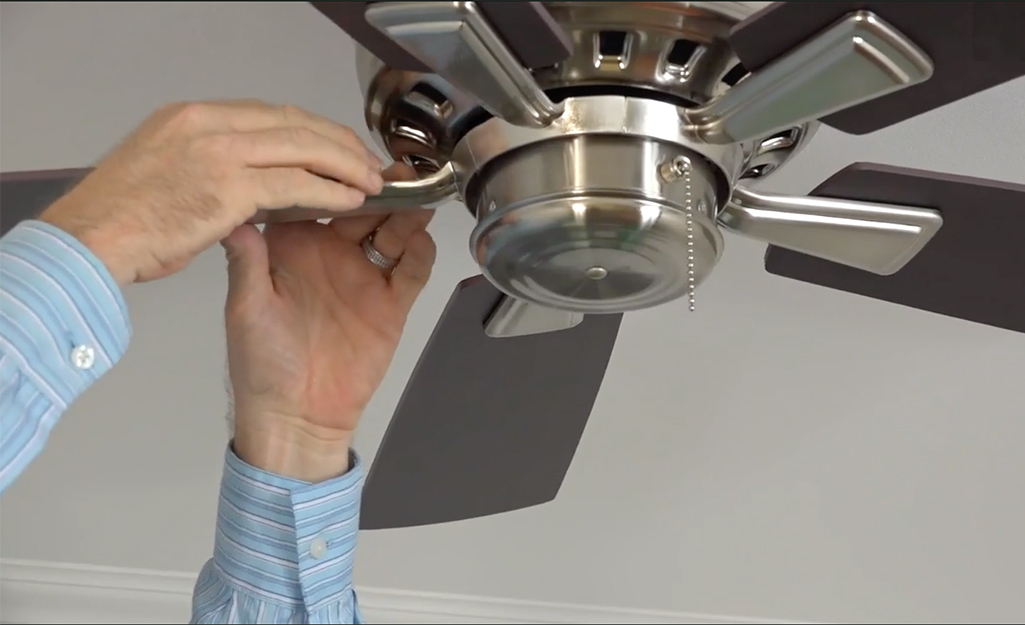
- Make sure the blades are installed in the right direction.
- If your ceiling height is 10 or more feet, your fan should not be installed too close to the ceiling. A longer down rod is needed for high ceilings to ensure proper air flow. Check the distance from your fan to the floor. Look at your owner’s manual for the recommended down rod size and replace it if necessary.
- Make sure your fan’s reverse switch is in the proper position for the season. For example, a ceiling fan should rotate counterclockwise in the summer so that the blades push cooler air down in a column. The counterclockwise rotation is typically set by pushing the directional switch on the side of the motor housing down, but you may need to check your fan's instruction manual to confirm. Find out more about how to adjust your fan with our ceiling fan direction guide.
Why Doesn't the Motor Run?
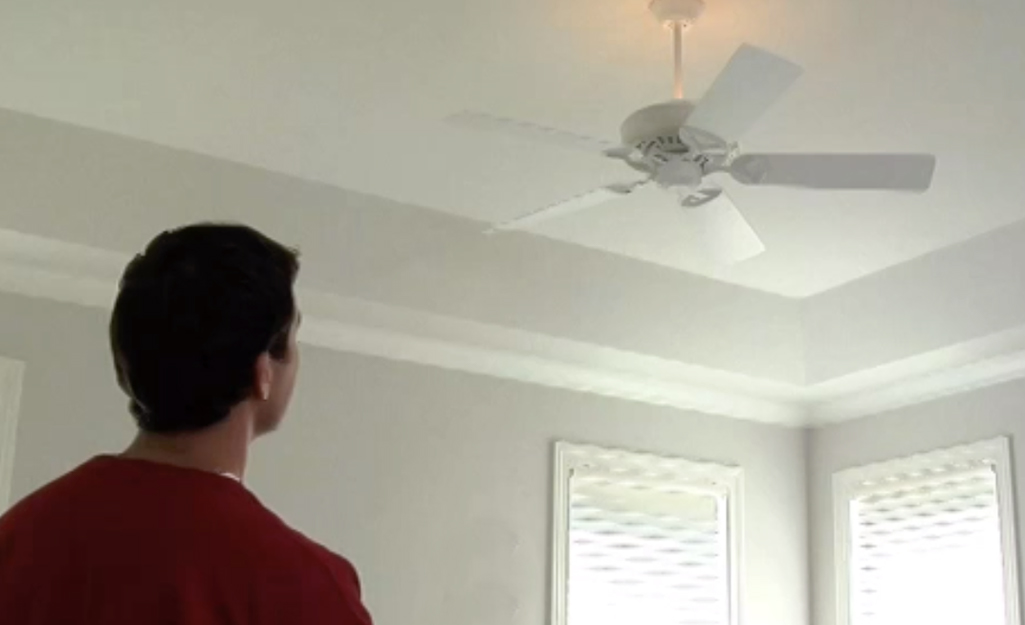
Hampton Bay ceiling fans rarely have motor problems. First, rule out any power issues by seeing if your lights work. If they do, contact Hampton Bay customer service at 855-HD-Hampton (855-434-2678).
Why is the Fan Crooked?

If your fan isn't hanging straight down:
- Check if the downrod is securely installed inside of the mounting bracket so it doesn't shake while it's turning.
- Make sure your down rod is the right diameter for your fan and length for your ceiling height. Check your owner's manual or call Hampton Bay ceiling fan customer service at 855-HD-Hampton (855-434-2678).
Why Don't the Bulbs Fit?
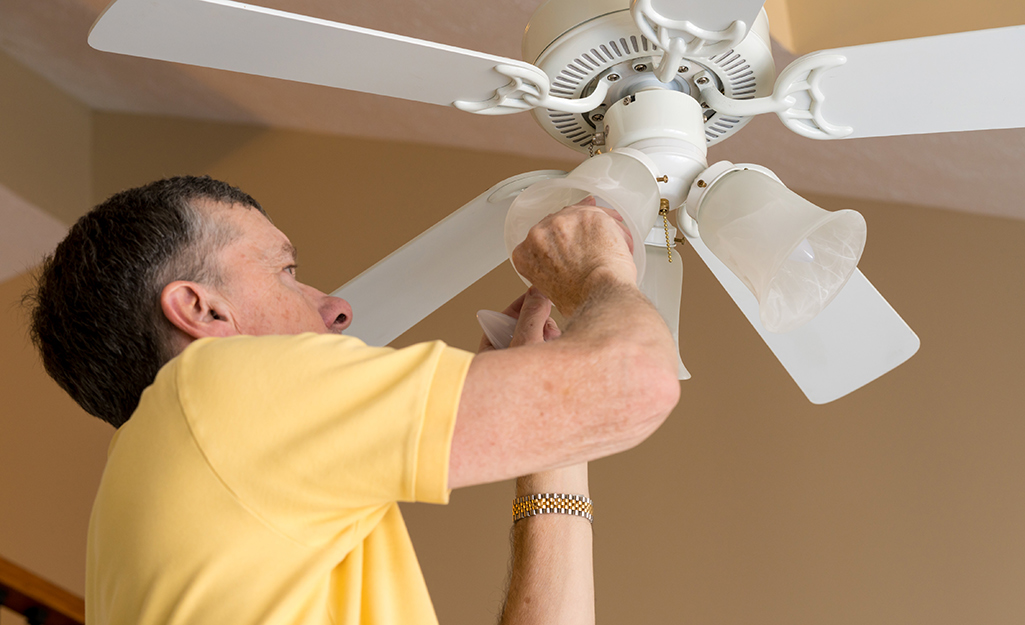
Candelabra bulbs come in different sizes. If yours are too large or too small to fit in the ceiling fan's light kit, check the user's manual for the recommended bulb size.
Why is the Fan Smoking?

Immediately turn off all power to your Hampton Bay ceiling fan. Smoke or fire is an indication that your fan is damaged or your capacitor or receiver needs to be replaced. Consult your Hampton Bay ceiling fan manual for warranty information.
Why Are the Blades Drooping?

The most common reason ceiling fan blades droop is that the fan is being used outside when it is not rated for outdoor use. Heat, humidity and other weather can warp the blades. Replace the blades and move the fan indoors. Check here for replacement blades and other Hampton Bay ceiling fan parts.
Why Does the Light Strobe?
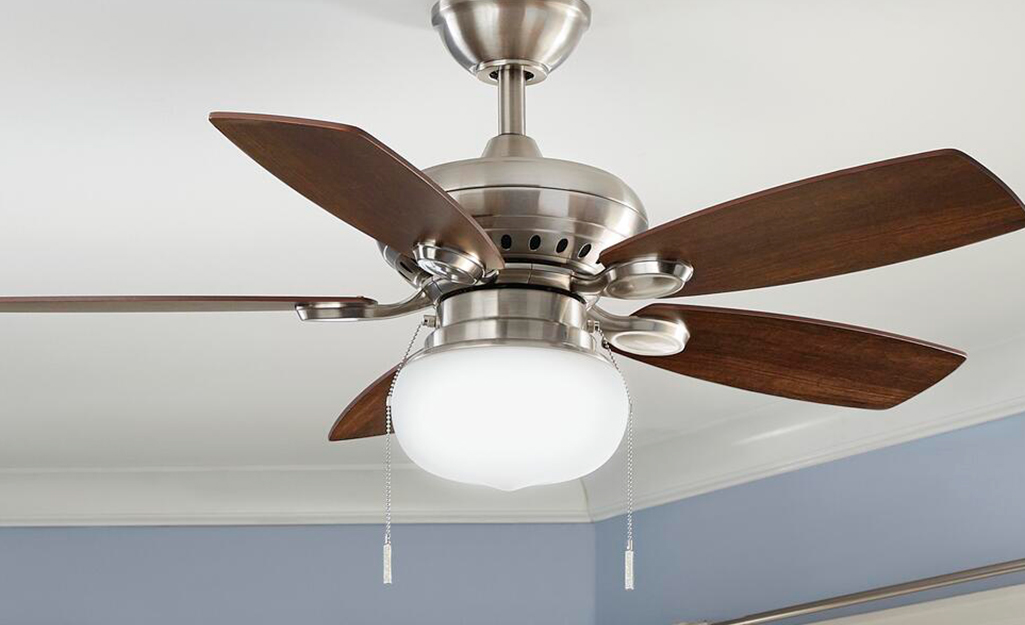
Not all fans are compatible with wall dimmer switches. This is especially true with LED CCT or dimmable integrated lights. These types can flicker even if the wall dimmer is set to a full 100 percent brightness. If the light strobes on your fan, change out the wall dimmer switch.
For more information on Hampton Bay ceiling fan troubleshooting or how to install Hampton Bay ceiling fans, check out the Home Depot Hampton Bay Customer Support page. You can also shop The Home Depot's selection of fans straight from The Home Depot Mobile App.























